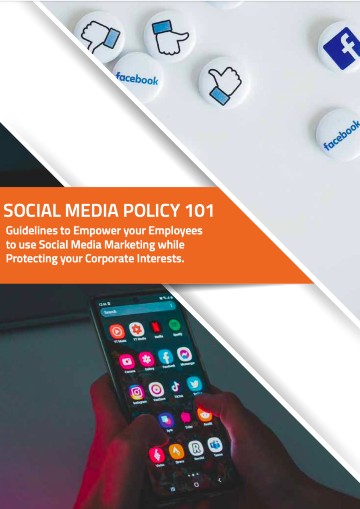
While a lot has been said about Influencer Marketing, many of which, have been indicative of the latter, truth be told, it actually has immense potential to be the former – given the right approach, strategy, and expectations.
Face it – influencers make waves. It’s just about finding the right one(s) to turn your tide.
If you’ve researched influencer marketing in the past, you would in all likelihood have found conflicting views, ranging from “it’s a no-brainer” to “watch out, it’s an unnecessary expense.” About a decade ago, the influencer marketing space was literally dominated by celebrities, save a few honest-to-God “nerds.” From then to now, though, we’ve seen it all – the internet Gods, much like many of their Greek counterparts, have risen, ruled, and fallen. In a saturated and fraud-tainted/ shy market, what gives?
Unlike about five years ago, when influencer marketing was just about popping out on Instagram or Facebook with pretty pictures and quirky stories, it’s now matured to become more about relevant, targeted marketing that’s as much about user personas as it is about business goals. And let’s face it. B2B marketing wouldn’t ever work via bright, eye-popping stories on Instagram.
So how do you go about creating an influencer marketing strategy that works for you? Here’s how.
1. Work out campaigning idea, message, and goals
While the most obvious and common goals of influencer marketing are boosting brand awareness and increasing sales conversions, it’s a good practice to focus further on honing these broad goals into razor sharp, measurable objectives based your business needs. Do you want to widen your user base in a particular demographic, or do you want to expand into a one? Perhaps you want to filter down your existing base to a more relevant one with targeted content. Or maybe you’re launching a new product or feature and need to educate your existing user base.
Whatever the case, your message is critical to get right, because it’s what determines your positioning as well as whether or not you meet your goals. But keep in mind that while it’s great to drill down to specific needs, you don’t want to stifle your influencer’s creativity and individuality. On the flip side, you also don’t want them posting entirely unrelated content. Our platform helps you easily structure, monitor, execute, track, and analyze your campaigns to ensure that you stick to your goals.
2. Do your due diligence
Which channels make sense for your brand? The industry you operate in plays a huge role in determining your answer. For instance, fashion brands can thrive on Instagram, Facebook, and YouTube, while B2B/ tech companies do much better on LinkedIn and Twitter. That isn’t to say that these two cases are mutually exclusive. If you use an automated, centralized platform , you can add as many channels as you like without having to worry about organizing, consolidating, and tracking woes.
Next, map out the demographics of your user base. What age group do you cater to? What are their needs and pains? Where and when do they prefer to read about you?
All these questions help you identify the type of influencers you should look to be associated with. Ideally, look out for micro or nano influencers with more niche audiences. They help you with much more accurate targeting, and it sure doesn’t hurt that they’re a lot more authentic – and therefore believable – than their celebrity counterparts who may know nothing about the products they’re trying to help promote and are more concerned with the compensation than their image/ reputation (which may in all possibility be immune to significant denting). Choose the right influencer and audience size, and voila. You have your budget requirements.
While compensation may vary considerably, try to be innovative about how you go about it. A few micro influencers have been known to accept products, while other may in fact include agency fees. The research phase is practically never-ending. You’ll find that you have to keep going back to the drawing board as your needs and objectives change over time.
3. Partner with the right influencers and contact them
Based on your goals, identify the influencers that work for you – they should offer the best fit in terms of number and types of followers, values, and (ideally) beliefs.
Helpful questions here include: What does the influencer already post about? Is the industry he/ she caters to the same as/ similar to the one you operate in? For instance, if you’re a cloud service provider, your best influencers are those who talk about hosting challenges and technologies.
You also need to find out if your influencer is legit. This means start stalking. Check and verify their backgrounds, see how old their profiles are, and go through their feeds and interactions. How good is their engagement ratio? Is their follower count abnormally high? Stay away from anyone who sets off your fraud detection alarm bells.
Once you zone in on your perfect influencers, get in touch with them. Many of them may be able to share portfolios of prior engagements – request for them. Vet whatever you can. Trust us, the more you vet your influencer, the easier you’ll feel about what you’re paying them.
4. Track, review, modify
An influencer marketing campaign cannot be successful if you adopt a set-it-up-and-forget-it approach. It involves careful monitoring, following up, and tweaking to stay on track. Set pre-determined dates to measure progress – even while your campaign is live. Not all campaigns will be equally successful, but you’ll (hopefully) be wiser with each one of them.
A formal advocacy program goes a long way in easing the whole process for all the stakeholders involved. Adobe Photoshop has built up a huge network of advocates to supplement its content with awesome user-generated content from a variety of little and well-known amateur and professional photographers who showcase the best of what the software can do.
Finally, influencers are human. Many of them have partnerships with other brands as well, so be hands-on with your relationships and foster them to ensure that you stay top of mind for your influencers. If you find during any of your routine checks that you aren’t reaching your goals, refine your approach and repeat the process.
To conclude
Influencers are here to stay. However, the only thing that’s constant about influencer marketing, cliched as it may sound, is change. So keep in mind while you build out your strategy that it should be flexible enough to adapt easily to minor modifications as well as major changes, and you’re good to go.
Also, remember that success varies in definition as well as extent across brands and campaigns, so if you encounter a setback, don’t stop – influencer marketing is way too valuable a marketing tool to ignore.























